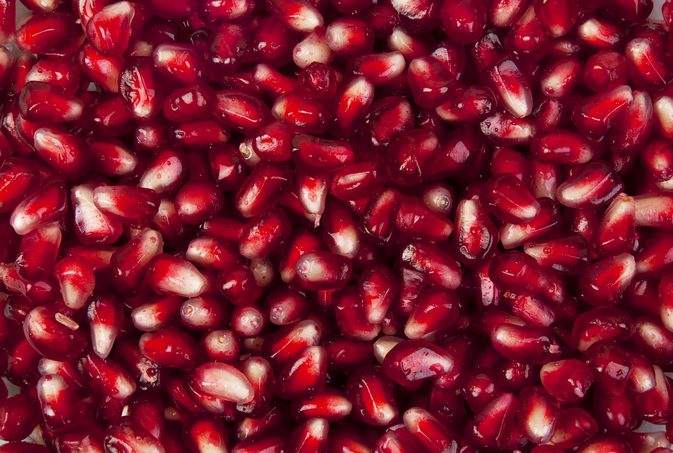
Every Pomegranate has a Seed from Paradise
It was narrated that the Prophet said,
"There is not a pomegranate except that it contains a seed from Paradise.
Ibn 'Abbâs used to take a seed from the pomegranate and eat it. He was asked, "Why do you do that?" He would answer, "I was told that there is no pomegranate on earth except that it has been pollinated with one of the seeds of Paradise, so may be it is this one."
Rabî'ah bint 'lâd al-Kilâbiyyah said, "I heard Imâm 'Ali ile say, 'Eat the pomegranates with its pith. It acts as a tanning (agent) for the stomach."
'Imâm as-Siûtî, al-Jâmi' al-Kabir (1/719). 2 Reported by at-Tabarânî, al-Mu jam al-Kabir, and al-Haythamî said that the chain of narrators are trustworthy. It was also reported by Imâm al-Bayhaqî in his book Shu 'ab al-Imân. 3 Tannin used in skin tanning is a chemical compound, which has astringent properties. * Reported by Imâm Ahmad, and Imâm al-Haythamî said that its chain of narrators are trustworthy.
Explanation of the Hadîth
The fruit of this tree, has a tough reddish rind, and contains many seeds (400-500), each enclosed in a juicy, mildly acidic, red pulp. The nearly round pomegranate fruit may weigh more than 1/2 kg and its diameter is up to 20 cm.
"Punica granatum" is the scientific name of the pomegranate tree. It belongs to the "Punicaceae" family. It is a vegetable family of short trees, between 1.5-2 m in height, and of only two species: Punica protopunica, and Punica granatum.
The leaves of the pomegranate tree are opposite to one another, with no oil glands and often clustered on branches that are stiff, angular and often have a spiny end.
The pomegranate fruit is divided inside into eight compartments and the seeds are either angular or oval. It is non-endospermic and the edible part is the outer fleshy pulp filled with sweet juice.
Tannin and Pelletierine (alkaloids) are extracted from the bark of the pomegranate tree and the fruit's outer skin. They are used as dyes, astringent alkaloids and in dying the pastes used in making artificial teeth.
The edible part of the pomegranate fruit weighs about 56% of the whole fruit, which contains 85% moisture and almost 11.6% sugars, and an insignificant amount of fat. It also contains salts of several minerals such as potassium, calcium,
Food and plants 91 magnesium, phosphorus, iron, copper, sulfur, chlorine, in addition to some vitamins, (especially vitamin C) and acids (especially Boric acid).
Researchers noticed that the pomegranate rind helps in food digestion, especially fats. It has also an astringent effect, fighting all forms of bacteria. It is used successfully in the treatment of diarrhea and dysentery.
The bark is used in particular to expel worms, after soaking and boiling. The pulp helps as a cough suppressant and as a dye, the color of which is permanent.
The dried rind and pulp are useful in the treatment of stomach acidity, digestive tract ulcers and bedsores. Nevertheless, pregnant and breast feeding women, and the patient affected with digestive tract diseases are advised not to use the soaked bark and rind as medicine.